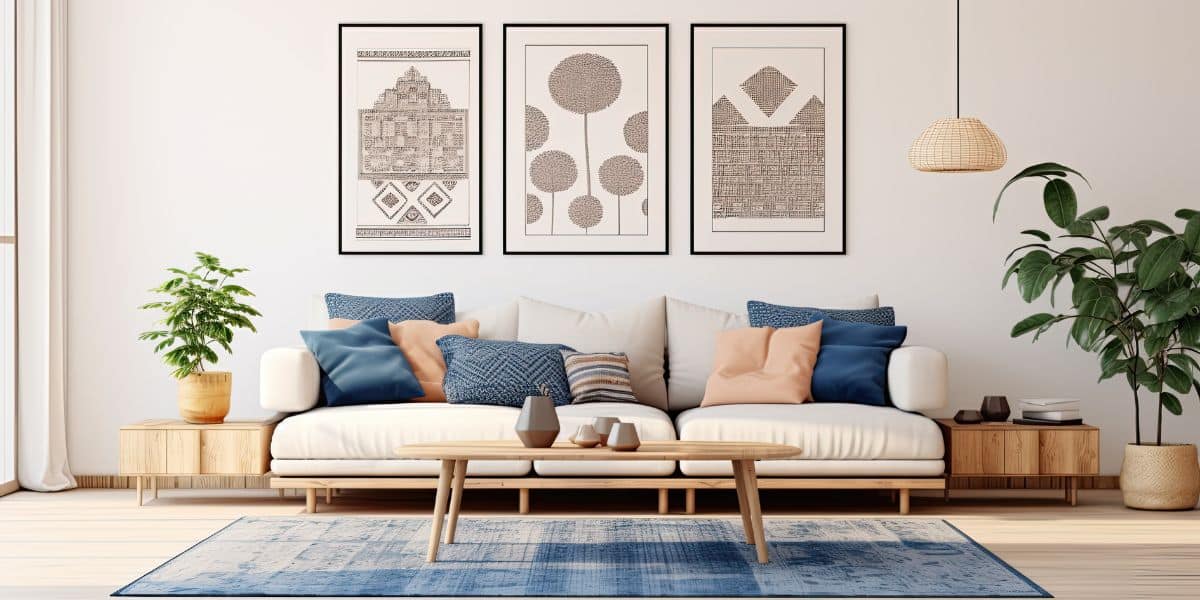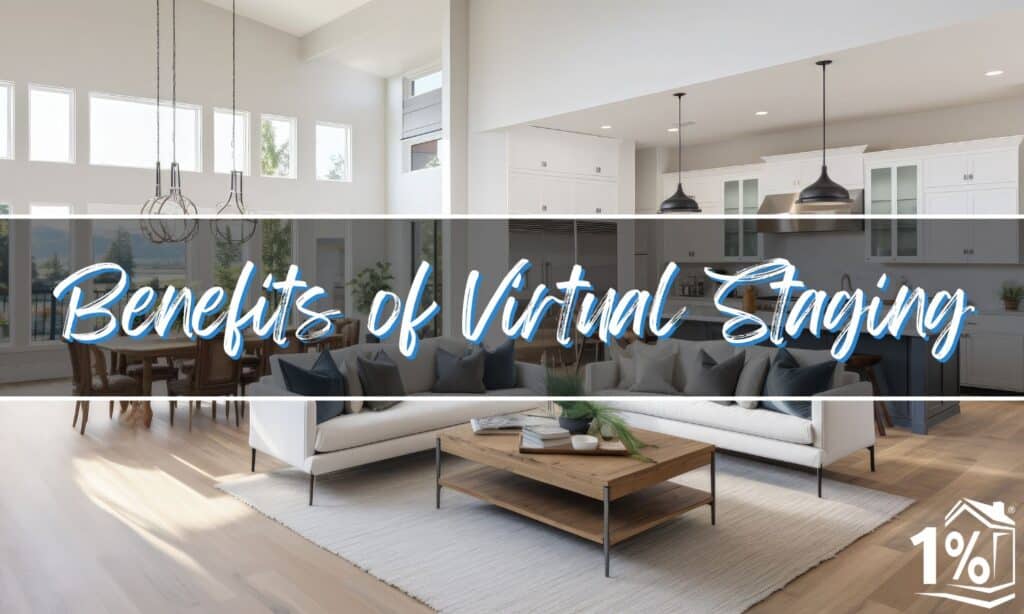According to the National Association of Realtors, 90% of homebuyers search online when they are looking for a home. How do you, as a real-estate agent, ensure that your listing is visible online? Virtual staging is one of the solutions. The staging of a house allows buyers to see its potential and encourages them to call you to come view it.
You don’t have to hire a designer or move furniture into your home in order to stage it. Virtual staging is the alternative. What is virtual staging, why is this important, and what are its pros and cons. Let’s take a look at virtual staging’s benefits.
What is virtual staging?
Virtual staging is home staging where furniture, art, and decor are digitally placed into the rooms. You can use technology to do everything you would normally have to do, such as purchase items, decorate, or hire a home stager. A photo editing tool can make an empty space look more full, and a messy room look cleaner.
Virtual staging vs traditional staging
Virtual staging differs from traditional staging in that it uses technology while the latter requires you to perform everything manually.
Normally, you would hire a professional in traditional staging to help you prepare your home before showing it to potential buyers. The professional (or you if you decide to do it yourself), will find ways to make your listing appealing to buyers. It may be necessary to bring in furniture, move decor, or make minor repairs so that the house looks as appealing as possible. You would then take photos of each room and list the house.
The popularity and ease of virtual staging has increased due to the time and effort it can save. This route would begin with taking photos of the listing. This could be done by a professional photographer, or by the virtual stager as part of their services. The virtual stager would design the rooms by adding furniture and décor in realistic proportions. After these images have been designed, you can then list the house.

Why virtual staging is important
Virtual staging can be important to make your home listing look appealing and catch the eye.
It is important to do this in an age where most homebuyers start their search online. You want your listing to stand out from the rest. This allows the buyer to visualize possibilities. Your listing may be dismissed by some homebuyers who find it hard to imagine themselves in the home. Virtual staging can help by making your listing appear inviting and livable.
The seller may ask their agent to use virtual staging. This is especially true during the pandemic. This is an excellent alternative for sellers who are uncomfortable with the idea of having too many people in their home, such as the painter, furniture deliverer, cleaners and others involved in traditional staging.
How can Realtors use virtual staging?
Hiring a professional to do virtual home staging is the best way for realtors.
Hire a professional to photograph the rooms you wish to highlight. The high-resolution images will be sent to a virtual stager, who could be the same person as the photographer. You will be asked to give them your design preferences. These notes will be considered to make the photo realistically furnished. The photo will have a watermark to indicate that it is a virtual staging. It will then be sent to you for uploading to your listing.
How much does virtual staging cost?
The cost of virtual staging could range from $75 up to $150 for each photo. The cost will depend on how many photos you want to stage and what type of room each one is.
Prices can also differ by company or contractor. If you plan to use the services of either company frequently, you could negotiate a price. The price may also depend on the type of editing required. You may have to pay more if, for example, you want to add a lot of detail like decor into each room.
Remember, if you want to stage your home properly, you will need to buy (or rent), furniture, and hire a designer. It may be more expensive than virtual staging. You will also need to visit the listing and coordinate with the designer to be at the door when they arrive or to receive furniture.
Real estate agents can benefit from virtual staging
Setting goals is one of the habits successful real estate agents have. You may consider virtual staging if you want to achieve your goal of acquiring more listings. Consider these virtual staging benefits.
1. Save time
Traditional staging requires time. It can take hours to find furniture and make sure that the seller will accept it in their home. It’s also important to book a moving company to set up and take down the furniture. Every day counts during the busy season. Your potential buyer may make an offer on another home if you wait one day longer for your home to be finished before listing it.
2. Take care of privacy concerns
It is not easy to get clients for real estate. But when you go the extra mile for them and show that you care, they will remember and appreciate your efforts for many years. This can lead to a steady stream of referrals. Privacy concerns can arise when you post pictures of the home of your seller, including all their possessions. Virtual staging can help you show that you care about the safety of your seller and give them another option.
3. Eye catching
Most homebuyers search for homes online before making an appointment with a realtor. The photos of a vacant house may not be appealing to buyers. A cluttered house may also make buyers not take your listing seriously. Virtual staging is a great way to give your photos that extra attention they need.
4. Cost-effective
Costs of home staging are high. The cost of traditional staging can be high. It includes hiring a designer and paying for the transport of the items you wish to use to decorate your space. Even if you rent furniture, insurance may be required. Virtual staging is a great way to save time and make the process more efficient.

5. Gives perspective
Some homebuyers find it hard to imagine themselves living in a room that is empty. Virtual staging allows you to show the buyer the perspective of the room by adding furniture digitally. You can also demonstrate other uses for the space. You could, for example, stage a room to look like an office or children’s playroom. Don’t forget to include a disclaimer so that the buyer is not disappointed when they view the house in person.
6. More variety
Virtual staging allows you to choose any color or style. Virtual staging allows you to avoid the problem of not being able to find the perfect table to match your new couch. You can also change the table’s color if it isn’t what you want. You can also design your home to reflect the locality in which it is located.
7. Safety
Virtual staging has become the new standard. The traditional staging method requires that many people enter the home of your seller. Virtual staging allows you to limit the number of people that enter your seller’s home. A lot of homeowners like this due to safety concerns.
Disadvantages of virtual staging
Virtual home staging, when done correctly, can bring out the best in a house. Just because an image is beautiful doesn’t make it ok to use on your listing. Here are some cons of virtual staging.
1. Can be misleading
The furniture in the photo may entice a potential buyer to view the listing. Include a disclaimer, or watermark, to indicate that the photo was virtually staged. This will help avoid disappointment. Print out the photos that were virtually staged and leave them on the property. So, every time a potential buyer sees it, they can compare the photo to reality.
2. Can look fake
You need to make sure to choose a professional that can ensure the furniture and decor is as realistic as possible. You may be tempted to use unique decor pieces in your living room, but you should wait and choose pieces that most potential homebuyers would likely place in their homes.
What’s the bottom line? Is virtual staging worth it?
Yes, it is. Virtual staging is worthwhile because it’s often the most cost-effective option, offers flexibility and allows you to showcase your property, especially in an age where online marketing is possibly the most important part of listing a home.

